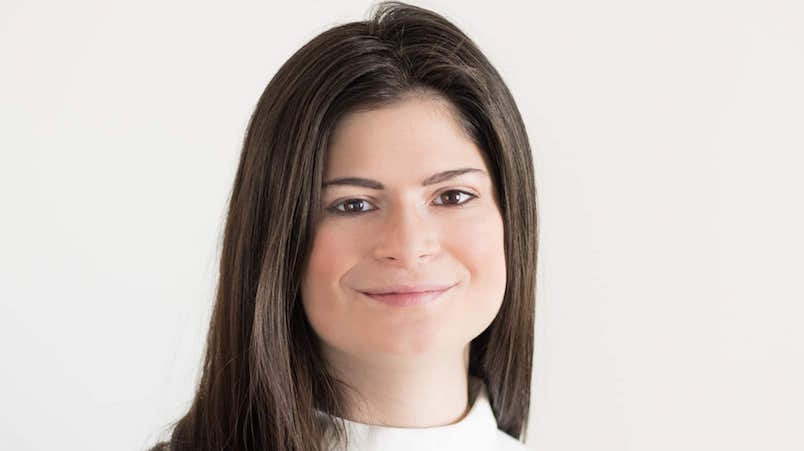Billion dollar advertiser Kimberly-Clark pins hopes on ad verification firms nailing ad attention, automated creative after cookies crunched

CPG giant Kimberly-Clark is backing ad verification providers to underpin programmatic advertising after Google kills cookies, unlocking the ability to optimise media investment to attention and enabling brands to plug automated creative directly into programmatic pipes. It's a big call given recent shenanigans, but Global Programmatic Capability Lead Rachel Mervis is confident the likes of IAS, Double Verify and White Ops can deliver.
What you need to know:
- Ad verification providers will play a central role in programmatic advertising when Google culls cookies, Kimberly Clark global programmatic lead suggests.
- Rachel Mervis told the Sydney Programmatic Summit that the "future proof" major vendors will soon launch direct integrations to automated creative systems, or dynamic creative optimisation (DCO) providers.
- She also urged brands to blend traditional metrics with quality or attention benchmarks for better results, an approach local Double Verify boss Imran Masood said is delivering much stronger results for brands such as Vodafone.
- The calls came just before verification providers came under fire for not spotting billions of ads going to the wrong sites across US news publisher Gannett.
For every single one of our campaigns in the US, we look at these engagement metrics and we pair it with the ROI to determine correlations.
Three-ply approach
Kimberly-Clark is backing ad verification providers to underpin programmatic advertising after Google kills cookies.
The CPG giant spent almost a billion dollars on advertising in 2020, much of it digitally, and the vast majority of that programmatically.
Rachel Mervis, Global Programmatic Capability Lead – and a main author of the ANA’s forthcoming programmatic transparency white paper – told Sydney’s Programmatic Summit that ad verification providers will be central to digital advertising in a post-privacy world, with technology that is “incredibly future-proofed” against cookie deprecation.
Verification providers have pushed hard into contextual capabilities and can now enable contextual ad suppression and audience segmentation so that brands can avoid wasting money serving ads to people that don’t like their brand or category, Mervis told delegates.
Mervis suggested the likes of Double Verify and Integral Ad Science will soon launch “direct integrations with DCO [dynamic content optimisation] providers”.
That means they can “enable automatic optimisation [of] creative off of attention and engagement metrics, as measured by the core ad verification providers rather than automating off the various proxy metrics … such as click-through rates”, said Mervis, a former Nestlé programmatic lead and one time Merkle and Amazon exec.
As yet there is scant official word from verification providers regarding DCO integrations. In the meantime, Mervis said brands should also use ad verification data to “pair quality metrics with cost, or pair attention metrics with cost, to have a more holistic measurement [across] digital operations.”
Fusing traditional metrics with quality or attention benchmarks “is something we do at Kimberly-Clark” said Mervis. “For every single one of our campaigns in the US, we look at these engagement metrics and we pair it with the ROI to determine correlations”.
Kitchen sink
Imran Masood, Double Verify’s ANZ lead, was speaking at the same conference. He said when cookies are punted, brands will need to combine multiple metrics such as attention, quality and safety in order to reach audiences at scale.
“There isn't a single metric or a currency for the future that [can] deliver a more scaled outcome in a really fragmented and disrupted marketplace,” he suggested.
But Masood said advertisers that successfully fuse multiple metrics are driving much higher sales than brands optimising one-dimensionally. He cited a campaign for Vodafone Germany that he claimed had driven 2.5x “qualified” traffic and sales conversion rates, compared to non-layered campaigns.
Masood's key point was that advertisers must optimise to combined metrics such as attention and intent in real time – not analyse results post-campaign when the opportunity is long gone.
eMarketer has predicted 91 per cent of US digital advertising will be delivered programmatically by next year, encompassing some US$247bn worth of media spend.
However, brands, publishers and verification providers have come under fire in recent days following a Wall Street Journal exposé of rival publisher Gannet.
Researchers found the publisher of USA Today plus dozens of other US news sites had misplaced ads for the likes of Adidas, Ford, Kia, Nike and Starbucks over nine months – and neither the publisher nor its advertisers noticed that billions of ads had been running in the wrong places.
Neither, it seems, did their verification providers.
